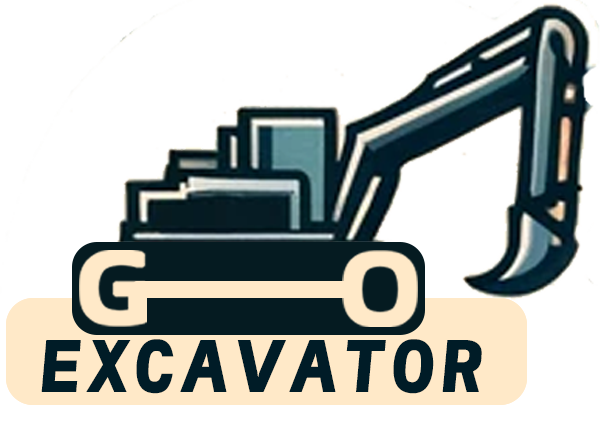
Rust removal is a critical maintenance task for construction and mining equipment, including giant excavators. Rust not only affects the appearance of the machinery but can lead to severe structural damage and operational inefficiencies.
Understanding Rust and Its Impact
What is Rust?
Rust is a type of corrosion that occurs when iron or its alloys, such as steel, react with oxygen and moisture. This reaction forms iron oxide, which weakens the metal and can lead to significant damage over time.
Why is Rust Removal Important?
- Structural Integrity: Rust can compromise the structural integrity of the excavator, leading to potential failures.
- Operational Efficiency: Rust can cause parts to seize, reducing the efficiency of the excavator.
- Aesthetic Value: Removing rust improves the overall appearance of the equipment, which can be important for company image and resale value.
Preparing for Rust Removal
Tools and Materials Needed
- Personal Protective Equipment (PPE): Gloves, safety goggles, dust masks, and protective clothing.
- Rust Removal Tools: Wire brushes, sanding discs, angle grinders, and needle scalers.
- Chemicals: Rust converters and removers, such as phosphoric acid-based solutions.
- Cleaning Supplies: Water, soap, and cleaning cloths.
- Paint and Primer: To protect the metal after rust removal.
Safety Precautions
- Proper Ventilation: Ensure the workspace is well-ventilated to avoid inhaling harmful fumes from chemicals and rust dust.
- Use of PPE: Always wear appropriate protective gear to safeguard against chemical exposure and physical injury.
- Equipment Handling: Handle all tools and chemicals according to the manufacturer’s instructions to prevent accidents.

Step-by-Step Guide to Rust Removal
Step 1: Initial Assessment
- Inspect the Excavator: Conduct a thorough inspection to identify all rust-affected areas.
- Determine Severity: Assess the severity of the rust to decide the appropriate removal method.
Step 2: Surface Preparation
- Clean the Surface: Wash the excavator to remove dirt, grease, and loose rust. Use soap and water, then allow it to dry completely.
- Mask Off Areas: Protect sensitive areas and components that are not rusted or that could be damaged by the rust removal process.
Step 3: Mechanical Rust Removal
- Wire Brushing: Use wire brushes to remove loose rust and scale. This is suitable for light to moderate rust.
- Sanding and Grinding: For more severe rust, use sanding discs or angle grinders. Move the tool in a consistent pattern to avoid uneven surface finishes.
- Needle Scaling: Use needle scalers for heavy rust and hard-to-reach areas. This tool uses multiple needles to chip away rust.
Step 4: Chemical Rust Removal
- Apply Rust Remover: Use a rust remover solution, following the manufacturer’s instructions. Apply it to the rusted areas and let it sit for the recommended time.
- Scrubbing: After the solution has had time to work, scrub the area with a brush to remove the loosened rust.
- Rinse and Dry: Rinse the area thoroughly with water to remove any chemical residue, then dry it completely to prevent new rust from forming.
Step 5: Rust Conversion (Optional)
- Apply Rust Converter: If some rust remains, you can apply a rust converter. This chemical transforms rust into a stable compound that can be painted over.
- Wait for Conversion: Allow the converter to react with the rust according to the manufacturer’s instructions.
Step 6: Surface Protection
- Prime the Surface: Apply a rust-inhibiting primer to the cleaned and dried surface. This helps prevent future rust formation.
- Painting: Once the primer is dry, apply a coat of paint suitable for heavy-duty machinery. This adds an extra layer of protection and improves the excavator’s appearance.
Step 7: Final Inspection
- Check for Missed Spots: Inspect the excavator to ensure all rust has been removed and the surface is well-protected.
- Touch Up: Address any areas that may need additional attention, applying more primer and paint as necessary.
Maintenance Tips
- Regular Cleaning: Keep the excavator clean to prevent dirt and moisture buildup, which can lead to rust.
- Routine Inspections: Regularly inspect the excavator for early signs of rust and address them promptly.
- Protective Coatings: Apply protective coatings periodically to maintain a barrier against rust.
Rust removal is an essential maintenance task for ensuring the longevity and efficiency of your giant excavator. By following this comprehensive guide, you can effectively remove rust and protect your equipment from future damage. Regular maintenance and timely rust removal will keep your excavator in top condition, ready to handle the toughest jobs with ease.
A Comprehensive Guide to Buying a Excavator Second Hand
Purchasing a second-hand excavator can be a cost-effective solution for your construction or landscaping needs. However, buying used machinery comes with its own set of challenges and considerations. This comprehensive guide will walk you through [...]
Comprehensive Guide to Hyundai Mini Excavators: Features and Prices
Mini excavators have become indispensable tools in the construction and landscaping industries. Hyundai Construction Equipment, a global leader in heavy machinery, offers a range of mini excavators known for their reliability, efficiency, and advanced features. [...]
How to Extend the Service Life of Excavator Parts
Excavators are indispensable machines in the construction and mining industries. They perform heavy-duty tasks that demand robust components and meticulous maintenance. Extending the service life of excavator parts not only reduces operational costs but enhances [...]
Kymron Excavators: Innovative, Sustainable Construction Machinery
In the dynamic world of construction and heavy machinery, Kymron has emerged as a game-changer. Specializing in advanced excavator technology, Kymron is redefining industry standards with its commitment to innovation, efficiency, and sustainability. Company Overview [...]
Bulldozer vs. Wheeled Excavator: Which Machine is Better for Moving Soil?
Moving soil is a fundamental task in construction, landscaping, and earthmoving projects. Choosing the right machinery for the job can significantly impact efficiency, cost, and project timelines. Two of the most commonly used machines for [...]
Why Are Small Excavators Favored? A Comprehensive Guide
In the world of construction and landscaping, efficiency and versatility are key. Among the myriad of machinery available, small excavators have risen in popularity. But what makes them so favored? Introduction to Small Excavators Small [...]




